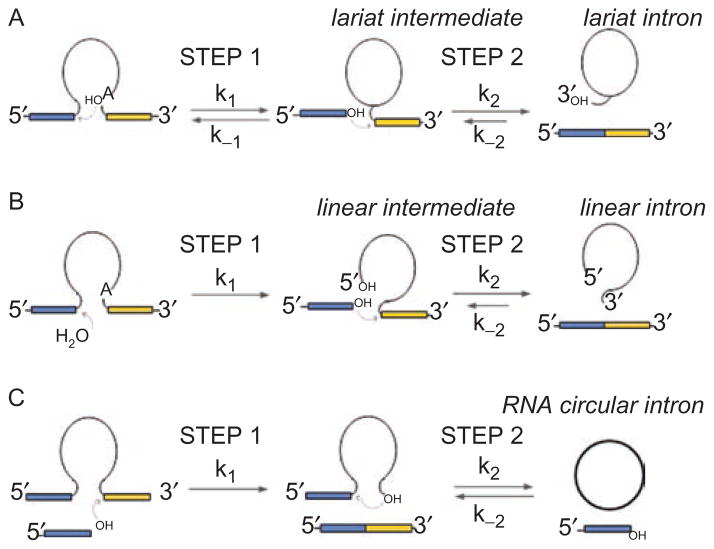Figure 3.
Three pathways for group II intron splicing and intron excision. (A) The branching pathway that leads to lariat formation. (B) The hydrolytic pathway that leads to release of linear intron. Note that the reverse reactions shown for (A) and (B) are the basis for the intron mobility reaction, whereby group II introns insert themselves into the sense-strand of target DNA (Pyle and Lambowitz, 2006). (C) A possible circle formation pathway. This reaction may be initiated by a free 5′-exon that has been liberated through the spliced-exon reopening reaction on a different intron boundary. Note that 5′-exons are shown in blue and 3′-exons are shown in yellow. The intron is indicated by a thin black line.

